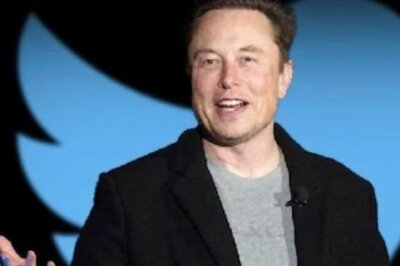
views
CANBERRA, Australia: Australias prime minister on Wednesday launched a billion Australian dollar ($738 million) investment fund to fast track emerging low emissions technologies including carbon capture and storage as he bolsters his conservative governments green credentials ahead of elections due within months.
Prime Minister Scott Morrison expects the private sector will at least match his governments AU$500 million ($369 million) contribution to the fund.
Australia can become a world leader in creating low-emissions technology that is both affordable and scalable, Morrison said in a statement.
The ruling coalition wants the fund to be administered by the Clean Energy Finance Corp., a government-owned green bank that was established to increase investment in the clean energy sector.
But that would require a change in the law because the corporation can only invest in technologies that have proved to work in the short term such as wind and solar. It cannot invest in more experiment technologies with longer-term potential such a carbon capture and storage.
The new fund would address a gap in the Australian market in which small, complex, technology-focused start-ups can be considered too risky to finance, the statement said.
Industry, Energy and Emissions Reduction Minister Angus Taylor said the law change was needed for Australia to achieve its net zero emissions target by 2050.
Theres lots of people, when it comes to climate policy, who want to wipe industries out, Taylor told Australian Broadcasting Corp.
They say we want to see resources industries gone or agriculture impacted. Thats not where we start. We start at the solution: low emissions technologies that can bring down emissions, Taylor added.
The center-left opposition Labor Party left open the possibility of supporting the legislation in the Senate if the government was promising new money and not taking investment away from other areas of clean energy production.
If this is genuine new money, then well look at the detail of the proposed legislation, Labors spokesman on climate change and energy Chris Bowen said.
The governments new policy to reduce Australias carbon emissions comes after Morrison was widely criticized at the U.N. climate conference in Glasgow, Scotland, for failing to set more ambitious targets for 2030.
Australia aims to reduce emissions by 26% to 28% below 2005 levels, while other countries have made steeper commitments.
With Australian elections due by May, Morrison on Tuesday announced a AU$250 million ($185 million) plan that he hopes would result in 30% of new passenger and light commercial truck sales in Australia being battery electric or plug-in hybrid electric by 2030.
Less than 2% of new vehicles sold in Australia are electric, and the transport sector is a major reason why Australia, on a per capita basis, is one of the worlds worst greenhouse gas emitters.
Australia is one of the worlds largest exporters of coal and liquid natural gas.
Carbon capture and storage involves capturing carbon at a source, concentrating it then injecting it deep underground.
Richie Mercian, a former Australian government representative on climate change, said the new fund would support fossil fuel technologies like carbon capture and storage instead of phasing out fossil fuels.
Australia is home to the worlds largest carbon capture and storage facility at Chevrons Gorgon natural gas project on Barrow Island off its northwest coast. There are around 60 such facilities operating or under construction around the world.
The Gorgon project has stored more than 5 million metric tons (5.5 million U.S. tons) of carbon emissions since it started operating in 2019.
But Chevron announced in July it had failed to meet its target of storing at least 80% of the carbon produced by the facility, or around 4 million metric tons (4.4 million U.S. tons) a year.
Peter Milne, a former oil and gas industry engineer, estimated that Chevron and injected only 30% of the carbon it had promised.
Disclaimer: This post has been auto-published from an agency feed without any modifications to the text and has not been reviewed by an editor
Read all the Latest News here














Comments
0 comment